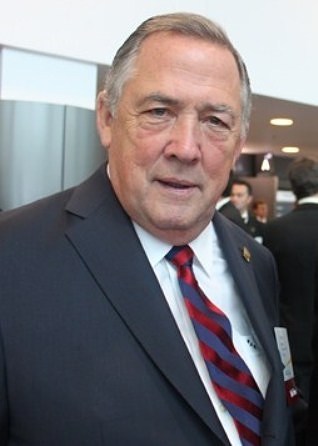
Peter Brown has contributed to the growth and prestige of Canada’s mining industry by helping many resource entrepreneurs and emerging companies gain access to venture capital. This capital has enabled countless mining entrepreneurs and professionals to acquire, explore and develop promising mineral prospects and open new mines.
Since 1960, Peter Brown has been a dynamic force in the Canadian capital markets. He joined Ted Turton in 1968 to purchase control of a small Vancouver brokerage firm for $23,000. By focusing on the small to mid-sized resource and junior industrial firms, long ignored by senior investment firms, he transformed Canaccord into an international force and Canada’s largest independent investment dealer.
Mr. Brown’s work at Canaccord helped build a vibrant junior finance market with a particular emphasis on and expertise in mining and exploration finance. These efforts gave birth to successes stories like Hemlo, Eskay Creek and Dia Met Minerals at home, and, Arequipa, Aurelian and Wheaton River abroad.
Peter Brown serves as Chairman of Canaccord Financial and is a director of the Investment Industries Association of Canada. We connected with Mr. Brown in our first installment of Top Mining Minds.
What factors will drive the mining markets over the next 12 months?
What will drive mining is demand and very low valuations. While I believe commodities are cheap and will do well over time, that thought must be tempered by the likelihood of slow growth and persistently high levels of unemployment for some time to come – together with the aging populations and unfortunate demographics.
I have no short term view on precious metals prices other than to note that the financially reckless destruction of the confidence in the currencies of the developed nations (combined with a global trend to civil disobedience mainly from a very connected youth) should have substantial impacts sometime in the future.
What should investors be doing right now?
For years it seemed that the markets for mining stocks were at the high end of the range relatively and now, with the severity of the correction, the reverse is true. I believe the best strategy is to build positions in those oversold and undervalued equities with high value in their “resources in the ground per share” and enough capital to avoid dilution at the bottom.
I think patience will bring substantial gains. Overtime I believe the biggest gains for the patient investor will be in the emerging and developing mid-cap mining and energy stories.
What are your top picks and why?
My favorite sector in the short term is food and agriculture and my first pick would be MBAC Ferilizer (Stock Profile – TSX:MBC) and second Potash Corp. (Stock Profile – TSX:POT & NYSE:POT) on a longer term basis.
My number one pick in traditional metals mining is Atna Resources (Stock Profile – TSX:ATN) with over 5 million US ounces valued at less than $30 an ounce in the ground and a projected cash flow almost equal to the market capitalization.
I also like Pilot Gold (Stock Profile – TSX:PLG). The company has an excellent management and geological team. Pilot Gold has two very good high grade discoveries – one in Nevada and one in Turkey which is in joint venture with Teck (Stock Profile – TSX:TCK.B & NYSE:TCK).
To read more from our Top Mining Minds series – CLICK HERE.
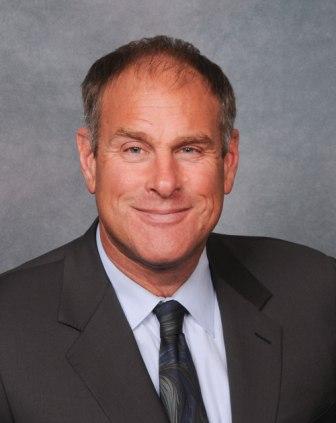
Rick Rule has dedicated his entire professional career to natural resource investing. In addition to the knowledge and experience gained in a long career as a licensed stock broker and founder of Global Resource Investments Ltd., he has a worldwide network of contacts in the natural resource and finance worlds.
In 1993, Rick financed Silver Standard (Stock Profile – TSX:SSO & NASDAQ:SSRI) for $2 million when the company’s valuation was less than $10 million. Through a few tough cycles in the mining sector he maintained his support for the company.
Today, Silver Standard has the largest in-ground silver resource of any publicly-traded primary silver company, with a pipeline of 15 projects ranging from grassroots exploration to production in Argentina, Peru, Mexico, Canada, Chile, and the United States. The valuation of Silver Standard is nearly $1.3 billion.
Mr. Rule currently serves as Chairman of Sprott US Holdings. Sprott US Holdings is active in securities brokerage, segregated account money management and investment partnership management involving both equity and debt instruments, across the entire spectrum of the natural resource industry. The company manages a number of Sprott Global investment funds including Diversified Resources, Precious Metals and Resource Income.
Collectively, Rick manages close to a billion dollars through investment partnerships and investment management firms. Mr. Rule is a frequent speaker at industry conferences, and is regularly interviewed for radio, television, print and online media outlets concerning natural resource investment and industry topics.
With a substantial amount of success in the mining sector under his belt we are delighted to connect with Rick Rule in our Top Mining Minds series.
What factors will drive the mining markets over the next 12 months?
We think the trend in non-precious metals commodities is down for the next twelve months, as a consequence of very weak demand from all major economic regions. We think major extractive industry shares will have trouble gaining market traction as well, partly in response to softening product prices, but also in the face of tighter credit markets constraining growth spending, and increasing pressure for higher social takes.
The junior market will bifurcate. The lower quality companies (at least 70% of the TSXV) will continue lower, as they strive to reach their intrinsic value ($0.00) in the absence of market support and financing. The strong will begin to rebound sharply, driven by seller exhaustion, increased merger activity, and what we believe will be a very strong discovery cycle.
The dam should break shortly in the financing markets, as managements adopt a more realistic set of valuation assumptions in the face of critical capital needs. This will be offset by the biggest population of suspensions and delistings since the early nineties.
What should investors be doing right now?
Be ready to aggressively participate in what will be a once in a decade financing calendar, and buy secondary market securities in companies with PEA or PFS stage projects where the net asset value exceeds the sum of upfront capital costs and enterprise value; where IRR’s exceed 30% and where paybacks are less than three years.
What are your top picks and why?
I’m a longer term player. Gold and silver development plays that are financially accretive will do well over the next 18 months. Looking longer term, uranium and the platinum group metals can only go higher.
To read more from our Top Mining Minds series – CLICK HERE.
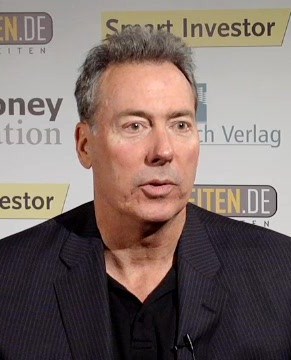
The “Silver Guru”, David Morgan holds degrees in finance and economics as well as engineering. He is the author of the investment newsletter The Morgan Report, a monthly publication that covers economic news, the currency market and reasons for investing in precious metals and specific mining equities.
David Morgan is a regular commentator on the gold and silver markets and has been featured on CNBC, Fox Business News and BNN in Canada. David is also regularly featured as a speaker at mining investment conferences in North America.
David publishes the website Silver-Investor.com and in 2009 he published, “Get the Skinny on Silver Investing”.
In his book David writes, “The silver market is not only much smaller than the gold market physically, but it is also true monetarily. The total amount of silver, in price terms, might equal ten billion dollars (factoring in bullion and coins). Whereas gold bullion and coins would be worth over a trillion dollars, this fact displays itself in the price action of the two metals. Silver is far more volatile than gold and, thus, investors should bear this in mind. However, as precious metal markets continue to gather strength throughout this decade, just a small increase in new silver purchases could have a far greater impact on silver prices than the same amount of money invested in gold.”
With ongoing easing of monetary policy around the world gold and silver are in the spotlight again. We caught up with David Morgan for our Top Mining Minds series.
What factors will drive the mining markets over the next 12 months?
Earning will drive any stock, so earnings that are higher than expected or earnings growth would be the first place to look. Couple this with an increasing precious metals prices and the professional money will come into this sector. This implies producers with wide margins are the first area to examine.
The “risk on” factor also plays a part with so much uncertainty in investments such as bonds which now are questionable investments in the minds of sophisticated investors that understand why the Euro is in so much trouble and why the QE3 announcement means a currency crisis is brewing.
Finally, momentum players will come on board but it may take longer than one year.
What should investors be doing right now?
General equity investors would be best served to be very cautious at the present time. Although U.S. equity markets remain “strong” it is in appearance only and internally the general stock market is quite weak. Any real selling pressure could take the market down noticeably. However, we also need to factor in that this is an election year in the U.S. and the working group on financial markets (plunge protection team) would most likely abate any significant drops in the main indexes such as the Dow or S&P 500. Regardless, caution is advised.
In the resource sector investors could look at which commodities are leading and which are lagging. It is best to purchase the strong groups which currently are the precious metals. The precious metals are negatively correlated to the general equity markets, so in a sell off gold usually performs well. This is not true of gold or silver stocks initially, but if the general equity market falters for long even the precious metals stocks will move up versus the downtrend in the general market.
Investors need to stress value and earnings! Look for companies that have earnings and earnings growth and if possible are undervalued. Times have changed a general rule is to seek companies that produce things that are “needed” and have demand regardless of economic conditions.
What are your top picks and why?
My top investment pick is the commodity sector in general, with the precious metals being my favorite within the sector. In times of financial turmoil the market seeks safety and value so both of the precious metals have these characteristics with silver also being imperative in a high tech society.
To read more from our Top Mining Minds series – CLICK HERE.

Top Mining Minds is an ongoing editorial and interview series from MiningFeeds.com, the internet’s #1 investment website focused exclusively on mining. We connect with some of the world’s most successful and influential mining industry magnates.
From company builders to company financiers, we feature the mining industry’s most experienced professionals and ask three key questions that most investors want to know:
1. What factors will drive the mining markets over the next 12 months?
2. What should investors be doing right now?
3. What are your top picks (can be a commodity sector, stock or both) and why?
Webster’s defines experience as: knowledge or practical wisdom gained from what one has observed, encountered, or undergone. And yes, there is no replacing experience but as Aldous Huxley notes, “Experience teaches only the teachable.”
Here are a few more relevant quotes as we embark upon our Top Mining Minds series.
- “You cannot create experience. You must undergo it.” Albert Camus
- “Experience is a good school. But the fees are high.” Heinrich Heine
- “Learning is experience. Everything else is just information.” Albert Einstein
INSTALLMENT 3 – TOP MINING MINDS – FEBRUARY, 2013
Stan Bharti, President & CEO – Forbes & Manhattan
In 2002, Stan Bharti founded Forbes & Manhattan, a private merchant banking organization with a focus on the natural resources sector. Forbes & Manhattan has sold a number of mining companies and maintains an investment interests in a large diversified portfolio of mining companies with operations around the world.
For Stan Bharti – CLICK HERE.
INSTALLMENT 2 – TOP MINING MINDS – NOVEMBER, 2012
Doug Casey, Founder – Casey Research
The “Rational Speculator”, Doug Casey classifies himself as a contrarian investor and has been a mainstay in the Canadian junior resource markets for decades.
For Doug Casey – CLICK HERE.
Peter Grandich, Founder – Grandich Publications
Peter Grandich is a well respected commentator on the metals and mining sector. Peter has published The Grandich Letter since 1984.
For Peter Grandich – CLICK HERE.
INSTALLMENT 1 – TOP MINING MINDS – OCTOBER, 2012
Peter Brown, Chairman – Canaccord Financial
Mr. Brown serves as Chairman of Canaccord Financial and is a director of the Investment Industries Association of Canada.
For Peter Brown – CLICK HERE.
Rick Rule, Chairman – Sprott US Holdings
Mr. Rule serves as Chairman of Sprott US Holdings an investment management firm active across the entire spectrum of the natural resource industry.
For Rick Rule – CLICK HERE.
David Morgan, Founder – The Morgan Report
The “Silver Guru”, David Morgan holds degrees in finance and economics as well as engineering. He is the author of the investment newsletter The Morgan Report.
For David Morgan – CLICK HERE.

Gold no longer has a legal role in the world’s monetary system, but because of a collapse of faith in sovereign obligations – fiat currencies/paper money – and a coming complete lack of trust in governments and financial institutions, I believe gold may very well quickly become a core banking asset.
So why do I believe gold is going to become a core banking asset? And, what exactly does gold have going for it to make this possible? I present to you the gold argument.
Historical Risk
“The history of reserve currencies reveals that the position of a country as a superpower (whose currency acts as a reserve currency) tends to rotate in a natural cycle of around 100 years. Will history repeat? From 1450 to 1530 it was Portuguese (80 years). From 1530 to 1640 (110 years) it was Spanish. From 1640 to 1720 (80 years) it was Dutch. From 1720 to 1815 (95 years) it was French. From 1815 to 1920 (105 years) it was British. And then the US dollar gradually dominated the scene….” Richard Russell
A Fiscal Cliff
“Gold has firmly established itself as a portfolio asset. Investors are not likely to abandon it…Gold is the only insurance available to protect one from the Obama fiscal cliff set to cause the U.S. economy to fall into recession in January.” Gold Thoughts, Ned W. Schmidt
Increases in taxes and, to a lesser extent, reductions in spending, the infamous $600 billion “Fiscal Cliff” that’s looming in the new year, will reduce the US federal budget deficit by 4 – 5.1 percent of Gross Domestic Product (GDP).
The US Congressional Budget Office (CBO) analyzed two different scenarios if the fiscal cliff was left in place:
- As measured by Fiscal Year – the combination of policies under current law will reduce the federal budget deficit by $607 billion, or 4.0 percent of gross domestic product (GDP), between fiscal years 2012 and 2013. The resulting weakening of the economy will lower taxable incomes and raise unemployment, generating a reduction in tax revenues and an increase in spending on such items as unemployment insurance. With that economic feedback incorporated, the deficit will drop by $560 billion between fiscal years 2012 and 2013.
- If measured for calendar years 2012 and 2013, the amount of fiscal restraint is even larger. Most of the policy changes that reduce the deficit are scheduled to take effect at the beginning of calendar year 2013, so budget figures for fiscal year 2013—which begins in October 2012—reflect only about three-quarters of the effects of those policies on an annual basis. According to CBO’s estimates, the tax and spending policies that will be in effect under current law will reduce the federal budget deficit by 5.1 percent of GDP between calendar years 2012 and 2013 (with the resulting economic feedback included, the reduction will be smaller).
Under those fiscal conditions, which will occur under current law, growth in real (inflation-adjusted) GDP in calendar year 2013 will be just 0.5 percent, CBO expects—with the economy projected to contract at an annual rate of 1.3 percent in the first half of the year and expand at an annual rate of 2.3 percent in the second half. Given the pattern of past recessions as identified by the National Bureau of Economic Research, such a contraction in output in the first half of 2013 would probably be judged to be a recession.
Safe Haven/Preservation of Purchasing power
Institutional investors tend to prefer investments that are thought to contain the potential for growth, growth = sprouts. An investment has to produce a growing revenue stream – if it doesn’t grow it doesn’t compound. Gold is rejected as an investment because it doesn’t produce sprouts, meaning the steady income and systematic growth so sought after by institutional investors just isn’t there.
Gold performs two jobs that fiat currencies, or any other financial innovation, cannot do; gold acts as a safe haven in times of turmoil – to escape Nazi Germany, or buy food and water in a crisis. Perhaps even more important gold preserves your purchasing power. In 1913 (the year the US Federal Reserve was born) the US dollar was well a dollar and gold was US$20 an ounce. Today, at almost the 100 year anniversary of the Fed the dollar has lost over 95 percent of its purchasing power and gold is almost $1800.00 an ounce.
In 1913, US$1000.00 would of bought you 50 ounces of gold (that’s $88,150.00 worth of today’s paper money). A thousand of today’s dollars will buy you 17 grams – just over half an ounce of gold.
Gold, sprout-less yes, but irreplaceable in its functions.
“The FED’s QE3 will stoke the stock market and commodity prices, but in our opinion will hurt the US economy and, by extension, credit quality. Issuing additional currency and depressing interest rates via the purchasing of MBS does little to raise the real GDP of the US, but does reduce the value of the dollar (because of the increase in money supply), and in turn increase the cost of commodities (see the recent rise in the prices of energy, gold, and other commodities). The increased cost of commodities will pressure profitability of businesses, and increase the costs of consumers thereby reducing consumer purchasing power.” Credit Rating Agency Egan-Jones
Collateral
Lenders loan money based on the criteria of:
- The borrower’s ability to service the debt – cash flow.
- The borrower’s collateral.
- A combination of both cash flow and collateral.
“Given the regulatory pressure to collateralize exposures, regardless of transaction type, there is a greater need for collateral. But going forward, there may be a risk of a shortage of good-quality collateral.” Olivier de Schaetzen, director, Euroclear
Debt has a maturity, and when maturity is reached borrowers look to roll it over. Unfortunately for borrowers the value, and high levels of esteem, of what has traditionally been thought of as good collateral (sovereign obligations – currencies) has collapsed.
According to Bloomberg borrowing costs for G-7 nations in 2012 will rise as much as 39 percent from 2011.
“The great corollary of over indebtedness is the relative scarcity of good collateral to support the debt load outstanding. This imbalance of debt to collateral is impacting the ability of banks to make loans to their customers, for central banks to make loans to commercial banks, and for shadow banks to be funded by the overnight Repo market. Hence the growth of gold as a collateral asset to debt heavy markets is inevitably in the cards and is de facto occurring. Gold is stepping up to the plate as “good” collateral in a world of bad collateral.” Professor Lew Spellman, former economist at the Federal Reserve and former assistant to the chairman of the President’s Council of Advisors
In February 2011, J.P. Morgan Chase & Co. said gold is at least as good an investment as triple-A rated Treasuries. J.P. Morgan started allowing clients to use gold as collateral in some transactions where traditionally only Treasury bonds and stocks have been accepted.
On May 25, 2011, the European Parliament’s Committee on Economic and Monetary Affairs (ECON) agreed to accept gold as collateral.
Real Interest Rates
The demand for gold moves inversely to interest rates – the higher the rate of interest the lower the demand for gold, the lower the rate of interest the higher the demand for gold.
The reason for this is simple, when real interest rates are low, at, or below zero, cash and bonds fall out of favor because the real return is lower than inflation – if your earning 1.6 percent on your money but inflation is running 2.7 percent the real rate you are earning is negative 1.1 percent – an investor is actually losing purchasing power. Gold is the most proven investment to offer a return greater than inflation (by its rising price) or at least not a loss of purchasing power.
Gold’s price is tied to low/negative real interest rates which are essentially the by-product of inflation – when real rates are low, the price of gold can/will rise, of course when real rates are rising, gold can fall very quickly.
There’s a saying that “six percent interest can draw gold from the moon,” undoubtedly true, but rates below two percent draw investors to gold.
The Feds interest rate is 0.25 percent and the Fed, in starting its third round of quantitative easing, has said rates will remain low for several more years.

“The FOMC is attempting to drive money out of bonds and INTO equities based on the fact that they have guaranteed practically no return as far as yields go on short term Treasuries for at least two years. Think about that. As an investor would you want to lock up money for that long for that kind of yield or would you want to buy stocks and attempt to capture a bit better return on your investment capital. After all, something beats nothing as far as returns go, especially if you think that this easy money policy is going to feed into further asset appreciation as the Dollar further succumbs to the news…the Fed is obviously sacrificing the Dollar in an attempt to keep a low interest rate environment in which stocks are rising.” Dan “Trader Dan” Norcini
Tier 1 Capital
“Tier 1 capital is the core measure of a bank’s financial strength from a regulator’s point of view. It is composed of core capital which consists primarily of common stock and disclosed reserves (or retained earnings) but may also include non-redeemable non-cumulative preferred stock. Banks have also used innovative instruments over the years to generate Tier 1 capital; these are subject to stringent conditions and are limited to a maximum of 15% of total Tier 1 capital.” Wikipedia
The Basel Committee for Bank Supervision (BCBS), the maker of global capital requirements and whose Basel III rules form the basis for global bank regulation, is studying making gold a bank capital Tier 1 asset.
“Gold has historically been classified as a Tier 3 asset. When determining how much money a bank can loan, the bank’s gold holdings have traditionally been discounted 50 percent of the current market value. With value cut in half, banks have little incentive to hold gold as an asset.” Frank Holmes, usfunds.com
If gold is made a Tier 1 Capital asset banks could operate with far less equity capital than is normally required. Gold would be the new backstop for debt, currencies and bank equity capital.
“Anyone who understands gold’s historic role will grasp the importance of the argument behind extra bank leverage. Direct ownership of bullion by a bank is superior to holding the fiat money issued by a central bank. It should increase confidence in any bank and the system as a whole. Given relative values, bank purchases of bullion will drive the value of gold as Tier 1 capital up relative to other qualifying assets, increasing its desirability for regulatory purposes further without a gold-owning bank doing anything.” Alasdair Macleod, resourceinvestor.com
If the Basel Committee agrees to banks using gold as Tier 1 Capital it would create substantial demand for physical bullion and be an important step toward gold’s re-monetization.
Central Bank Gold Buying
Following many years of net annual sales in the 400 to 500 tonne range, central banks, underweighted in gold and overweight in dollars and euro’s, became net buyers of gold in 2009.
In 2012 countries have continued the trend of gold buying reducing the “free-float” available to meet future demand.
Names on the list of recent central bank buyers include:
Mexico, Russia, Turkey (bought 6.6 tons in August), China, Argentina, Bolivia, Kazakhstan (bought 1.4 tons in August), Ukraine (bought 1.9 tons in August), Colombia, Venezuela, Thailand, Turkey, Belarus, Sri Lanka, Mauritius and Bangladesh.
Paraguay is the latest country to begin buying gold, their reserves went from a few thousand ounces to over eight tons.
South Korea’s gold reserves increased nearly 30%, from 1.750 million troy ounces in June 2012 to 2.260 million troy ounces in July – a 70 metric ton increase.
North Korea has exported more than two tons of gold to China over the last year.
Russia increased its gold tally to 30,113 million troy ounces in July 2012 from 29,516 million troy ounces in June.
In 2009 China purchased four tonnes of gold bullion from Hong Kong. In 2011 China purchased 46 tonnes of gold bullion.
China is also buying up the production from its own gold mines, as is Russia.
According to the World Gold Council (WGC) nations bought 254.2 tons in the first half of 2012.
The European Central bank kept its gold reserves at 16,142 million ounces.
The U.S. kept its reserves the same from June to July – 261,499 million ounces.
The IMF said that central bank demand in 2012 may be even higher than the 456.4 tons they bought last year – the most in almost fifty years.
“The International Monetary Fund (IMF) is planning to purchase more than $2 billion worth of gold on account of rising global risks. The IMF currently holds around 2800 tonnes of gold at various depositories.
The Fund is facing increased credit risk in light of a surge in program lending in the context of the global crisis. While the Fund has a multi-layered framework for managing credit risks, including the strength of its lending policies and its preferred creditor status, there is a need to increase the Fund’s reserves in order to help mitigate the elevated credit risks. Bloomberg quotes a report by an IMF staff while also adding that a $2.3 billion gold purchase is in the planning.” IMF to buy Gold worth $2.3 billion as credit risk increases, inverlochycapital.com
Gold and Drunken Sailors
“It will come as no surprise to those who know me that I did not argue in favor of additional monetary accommodation during our meetings last week. I have repeatedly made it clear, in internal FOMC deliberations and in public speeches, that I believe that with each program we undertake to venture further in that direction, we are sailing deeper into uncharted waters. We are blessed at the Fed with sophisticated econometric models and superb analysts. We can easily conjure up plausible theories as to what we will do when it comes to our next tack or eventually reversing course. The truth, however, is that nobody on the committee, nor on our staffs at the Board of Governors and the 12 Banks, really knows what is holding back the economy. Nobody really knows what will work to get the economy back on course. And nobody – in fact, no central bank anywhere on the planet – has the experience of successfully navigating a return home from the place in which we now find ourselves. No central bank – not, at least, the Federal Reserve – has ever been on this cruise before.
This much we do know: Our engine room is already flush with $1.6 trillion in excess private bank reserves owned by the banking sector and held by the 12 Federal Reserve Banks. Trillions more are sitting on the sidelines in corporate coffers. On top of all that, a significant amount of underemployed cash – or fuel for investment – is burning a hole in the pockets of money market funds and other non-depository financial operators. This begs the question: Why would the Fed provision to shovel billions in additional liquidity into the economy’s boiler when so much is presently lying fallow?…
One of the most important lessons learned during the economic recovery is that there is a limit to what monetary policy alone can achieve. The responsibility for stimulating economic growth must be shared with fiscal policy. Ironically, and sadly, Congress is doing nothing to incent job creators to use the copious liquidity the Federal Reserve has provided. Indeed, it is doing everything to discourage job creation.
Small wonder that the respondents to my own inquires and the NFIB and Duke University surveys are in ‘stall’ or ‘Velcro’ mode.
The FOMC is doing everything it can to encourage the U.S. economy to steam forward. When we meet, we consider views that range from the most cautious perspectives on policy, such as my own, to the more accommodative recommendations of the well-known ‘doves’ on the committee. We debate our different perspectives in the best tradition of civil discourse. Then, having vetted all points of view, we make a decision and act. If only the fiscal authorities could do the same! Instead, they fight, bicker and do nothing but sail about aimlessly, debauching the nation’s income statement and balance sheet with spending programs they never figure out how to finance.
I am tempted to draw upon the hackneyed comparison that likens our dissolute Congress to drunken sailors. But patriots among you might take umbrage, noting that a comparison with Congress in this case might be deemed an insult to drunken sailors.
Just recently, in a hearing before the Senate, your senator and my Harvard classmate, Chuck Schumer, told Chairman Bernanke, “You are the only game in town.” I thought the chairman showed admirable restraint in his response. I would have immediately answered, “No, senator, you and your colleagues are the only game in town. For you and your colleagues, Democrat and Republican alike, have encumbered our nation with debt, sold our children down the river and sorely failed our nation. Sober up. Get your act together. Illegitimum non carborundum; get on with it. Sacrifice your political ambition for the good of our country – for the good of our children and grandchildren. For unless you do so, all the monetary policy accommodation the Federal Reserve can muster will be for naught.” Dallas Fed President Richard Fisher
Barking Up the Wrong Tree With the Phillips Curve
The Phillips Curve refers to the inverse relationship *thought by many to exist between inflation and unemployment – when inflation is high, unemployment is low, and vice-versa.
Since 1974 seven Nobel Prizes have been given for work critical of the Phillips curve.
“Instead of adopting a “pure” monetarist target — say a 5pc trend growth rate for nominal GDP — the Fed is implicitly arguing that a little more inflation is a worthwhile trade-off if it creates more jobs.
Bill Woolsey from Monetary Freedom says we are back edging back towards the `Phillips Curve’ temptations of the 1960s and 1970s, which ended with stagflation and the misery index.
“Targeting real variables is a potential disaster. Expansionary monetary policy seeking an unfeasible target for unemployment was the key error that generated the Great Inflation of the Seventies,” he said.
Bernanke’s attempt to push down borrowing costs is at odds with monetarist orthodoxy. Woolsey argues that successful QE should cause rates to rise — not fall — because the goal of such policy should be to put money into the hands of businesses that then invest, spending on machinery and real expansion.
The Fed is barking up the wrong tree with its doctrine of credit yield manipulation, or “creditism”, straying far from the quantity theory of money.” Ambrose Evans-Pritchard, International business editor, The Telegraph
Global Production Flat, Costs Jump
Investments are not made on profit, investments are made on sustainable margins.
According to the Thomson Reuters GFMS’s Gold Survey 2012 Update, global mined gold production was flat, in the first half of 2012, for a variety of reasons:
- Declining grades
- Construction and commissioning delays
- Extreme weather
- Labor strikes
“These are not the only headwinds producers have to face. The relative stagnation of the gold price, coupled with further rises in production costs, has seen producers’ cash margins eroded by 16% over the past nine months, while upward revisions to capital expenditure forecasts will place additional pressure on free cash flow going forward.” GFMS
GFMS’s ‘all-in cost’ metric reflects the full marginal cost of mine production, it has recently risen to $1,050/oz.
Danger Will Rogers Danger
Consider also:
- A high risk of default of sovereign states
- Gold’s bull market has been stealthy – most investors and institutions have not participated
- Geo-political risk is climbing and there are very few deposits of over one million ounces in geopolitically safe areas
Conclusion
Gold is unique, it is the only non-Tier 1 asset to be universally regarded by investors the world over as a flight to safety asset. Gold, if moved from a Tier 3 to Tier 1 asset would be competing as a safe haven investment against un-backed bonds yielding less than zero in inflation adjusted terms and issued by over indebted governments.
Gold is set to become the new “good collateral.”
Central banks, while endlessly creating their own fiat currencies, continue to buy up, and hold in their vaults, the world’s gold. A few countries are buying up their domestic gold production – even the IMF is buying more gold to reduce their risk exposure. All of this gold buying is drastically reducing the number of gold ounces/grams available to the world’s citizens.
The world’s central banks and their respective governments are out of sync, monetary and fiscal policies are not being coordinated.
Governments can’t print gold, or silver, and no government controls them, that’s why precious metals are the only medium of exchange that have survived throughout history.

Euro gold prices remained close to all-time highs hit yesterday. “The debt crisis in the Eurozone has escalated again,” says today’s commodities note from Commerzbank. “Gold should therefore remain in high demand as a store of value and alternative currency. Silver has also been pulled upwards in gold’s slipstream.”
Spain unveiled a “crisis budget” Thursday that included a third year of public sector wage freezes and an 8.9% cut in ministry budgets. “This is a crisis budget aimed at emerging from the crisis,” said deputy prime minister Soraya Saenz de Santamaria.
Olli Rehn, European Commissioner for Economic and Monetary Affairs, said the budget goes beyond what his institution required. “It’s positive that Spain is laying the groundwork for a bailout,” says Ayako Sera, Tokyo-based senior market economist at Sumitomo Mitsui Trust Bank.
A Spanish bailout would pave the way for the European Central Bank to buy Spain’s government debt on the open market, through its Outright Monetary Transactions program announced earlier this month.
Spain will use a decade-old reserve fund to pay for increases in pension payments, newswire Bloomberg reports. “The reserve fund is there to be used,” said budget minister Cristobal Montoro, adding that it is “politically very important” to maintain pensioners’ purchasing power.
“Politically, they couldn’t do anything else,” agrees Jose Ramon Pin, professor of public administration at IESE business school. Tens of thousands of demonstrators have taken to the streets of Madrid this week to protest austerity measures, in scenes that have been echoed in Portugal and Greece.
Ten-Year Spanish government bond yields remained below 6% this morning, after breaching that level earlier in the week for the first time since the ECB announced its OMT program on September 6.
The Euro meantime regained some ground against the Dollar this morning following a week of losses. Euro gold prices meantime remained near yesterday’s record high of €44,377 per kilo (€1380 per ounce) trading in a tight range this morning above the previous record hit last September.
Spain is also expected to publish the result of banking sector stress tests later today, including estimates of likely levels of recapitalization required. “They have to be seen to be coming clean and being realistic,” reckons Ron D’Vari, former head of structured finance at BlackRock.
“There’s no right answer for how much capital the Spanish banks will need,” adds Madrid-based Nomura analyst Daragh Quinn, “but they at least need to exceed people’s expectations…the real experience of the banks shows that losses just go up to the extent that the economy gets progressively worse.”
Earlier this week, ratings agency Standard & Poor’s said it expects Spain’s economy to shrink by 1.4% next year – a sharper contraction than the 0.7% fall it forecast back in July. Fellow rating agency Moody’s is set to publish its review of Spain’s rating later today, with several analysts predicting it will downgrade Spain to junk status.
Elsewhere in Europe, French president Francois Hollande is expected to unveil France’s toughest budget in three decades as the government attempts to hit its 3% of GDP deficit target for 2013.
Here in London, it was announced today that the British Bankers’ Association will no longer be responsible for the London Interbank Offered Rate (Libor), following the scandal of so-called rate-rigging that has “engulfed more than a dozen institutions on three continetns”, the Financial Times says.
“Today we press the reset button,” Financial Services Authority managing director Martin Wheatley said Friday. “Libor needs to get back to doing what it is supposed to do, rather than what unscrupulous traders and individuals in banks wanted it to do.”
Libor is used as a benchmark rate and is referenced for more than $300 trillion worth of contracts worldwide, the FT reports.

Bloomberg News reports that 39% of gold mining output in South Africa – the world’s former #1 producer – has been closed after fresh wildcat strikes hit gold majors AngloGold (Stock Profile – NYSE:AZ & ASX:AGG) and Gold Fields (Stock Profile – NYSE:GFI).
New wage demands handed to managers at Anglo yesterday ask for 16,000 to 18,500 Rand per month. Rock drill operators currently average some 10,000 Rand according to local press – equivalent to US$1200.
The world’s third largest gold mining firm, Anglo has now suspended at all of its South African operations according to the Independent Online.
Over in platinum – where South Africa remains the world’s #1 producer, and where this year’s “strike season” first broke – the CEO of Anglo American Platinum (Stock Profile – OTC:AGPPY) said Wednesday that Amplats “will not negotiate” with workers on illegal strike at its key Rustenburg operation.
Last week, wildcat strikers won a 22% raise from platinum producer Lonmin (Stock Profile – LSE:LMI), whose Marikana mine saw 34 workers killed by police in rioting this month.
“There’s no question it has caused massive damage to us and incredible damage to South Africa’s mining sector,” says Albert Wocke, associate professor at University of Pretoria’s Gordon Institute of Business Science.
With formal unions, all closely tied to the ruling ANC party, cut out of Lonmin’s negotiations, “The government needs to step up and reassure investors,” says Wocke.
“We have got an unstable, almost unpredictable regulatory regime.”
Political analyst William Gumede, also speaking to the LA Times, warns that “The biggest red flag is that people might actually start losing their trust in democracy as a protective mechanism.”
After the deaths at Marikana , “I think the police will feel constrained,” Gumede adds, “in how they deal with these strikes now.”
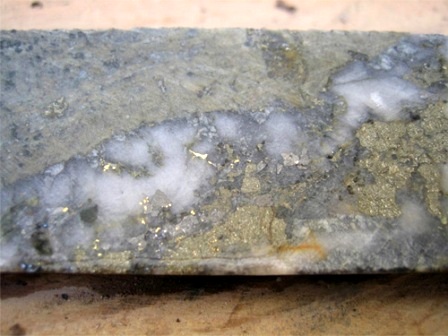
PMI Gold Corp. (Stock Profile – TSXV:PMV) announced that the Minerals Commission of Ghana has recommended that the Minister of Lands and Natural Resources grant the required Mining Leases to the company covering the Obotan project.
Concurrent with today’s announcement, PMI Gold also announced it has entered into a committed letter offer for a $30-million (U.S.) standby financing facility from Macquarie Bank while it completes the full financing package for development of the Obotan gold project.
According to Raymond James analyst Brad Humphrey, “Receipt of the Mining Leases for the Obotan project is a key milestone along the de-risking path towards first gold production. The next critical steps along the path include Environmental permits, a construction decision and project financing, all of which are expected later in the fourth quarter or early in the first quarter of next year.”
Humphrey also notes, “With its recently released feasibility study now complete and final permitting, financing and a construction decision all just on the horizon. We consider PMI’s Obotan project to be one of the better development projects currently moving forward within the developer group. We see an opportunity for investors to add PMI to portfolios at depressed levels as Obotan advances towards production and the company garners greater investor profile.”
The Raymond James analyst rates the company as Outperform with a target price of $1.40 per share. PMI Gold is moving toward its first gold pour in 2014 at its Obotan project in Ghana. Permitting, financing and a construction decision are anticipated in the near term now that a feasibility study is complete. Shares of PMI Gold are currently trading at $0.91.
I’ve been banging the table for the last 6 months about remaining optimistic during bear markets, and becoming incrementally more excited about a particular investment class as the markets appear bleaker. Since the beginning of September, mid-tier and major gold mining companies have rocketed higher. At this time, they are no longer at “catastrophic” level pricing as they were just 30+ days ago.
However, the junior resource exploration market still offers an entry at disaster level pricing. The ratio of GDX (Market Vectors Gold Miners ETF – NASDAQ:GDX) to many junior exploration plays is varying between 500-800 to 1, while in the previous 3 years, the average was about 100-200 to 1. In my opinion, this moment may be a twilight, the slow and precise tipping-point moment in which the explorers edge up ever so slightly—right before a historic boom. What I mean by boom, is many of these companies moving up in price by 200%-400% in a matter of days, weeks and months. We saw this type of action occur following the 2008-2009 crash, and we may very well see it again.
Here is a ratio chart of one of my favorite junior explorers. A snap-back reversion to the mean prior to this summer, equates to 150%+ move.
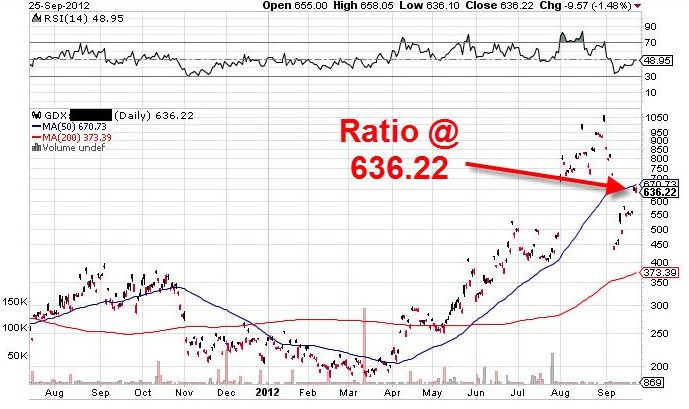
Many analysts comment that money needs to first move into the upper echelons of the mining sector, before trickling down to the explorers. This is a given. However, the timing of this process cannot be fully predicted, and when it occurs, it happens in a flash. By concluding that you will “wait” for the money to come back in first…is almost like saying, I’ll buy a life preserver when the ship starts sinking.
We are still in a market environment in which risk is abhorred…and for retail investors, this is the perfect time to take positions in low-volume juniors, without driving share prices up. Our advantage in this market(being non-institutional investors), is our size. As mice, we can move in with agility, and calmly wait for the ground vibrations of “risk-on” elephants…who will always return to the feed.
The Bangles, an American all-female band that originated in the early 1980s, scored several hit singles during the decade. Susanna Hoffs joined sisters Vicki and Debbi Peterson and Annette Zilinskas to form the band in Los Angeles.
The Bangles and their friendly 80s synthpop sound came to the attention of Prince. Prince wrote the song “Manic Monday” for the group and it went on to become a No. 2 hit in the US, the UK and Germany, outsold at the time only by Prince’s own composition, “Kiss”.
Today, it was just another manic Monday for the markets. Weak Chinese data combined with more general fears about the global economic outlook offset the expected impact of a new US Federal Reserve asset buying program and the signal from the Bank of Japan that it too will act boldly and flexibly when necessary to support its economy.
The MiningFeeds mining stock indexes were a sea of red today with the Silver Index leading the decline (-3.12%) while the Potash Index was the least impacted paring just -0.29%.
According to Morgan Stanley chief equity strategist Adam Parker, the US Federal Reserve will soon find its new program inadequate.
“QE3 will likely be insufficient to significantly boost equity markets and we wouldn’t be at all surprised to see the Fed dramatically augment this program (i.e., QE4) before year-end,” Parker said in a research note.
He said the probability that the Fed will need to beef up the program will increase “particularly if economic and corporate news continue to deteriorate as they have over the past few weeks.”
In his note to clients this morning Adam Parker highlights a number of key points concerning the Fed’s QE programs:
- For every $10 billion in additional purchases of mortgage-backed securities by the Fed, the S&P 500 was boosted by about 0.25 percent the following week.
- The stock market did better in weeks when the Fed bought more assets.
- The stock market did better when the Fed purchased MBS than when the Fed purchased Treasuries.
- The following week’s stock market returns were not significantly correlated with the previous week’s purchases, suggesting that the effect of QE purchases on stocks is pretty short-lived.
- Furthermore, while the effect of QE purchase on stocks is statistically significant, it’s not that statistically significant – for the statistically literate, Parker says that “T-stats are only in the 2’s.”
- There are diminishing returns to asset purchases under quantitative easing programs.
- QE usually benefits growth stocks and junk stocks the most, with healthcare the top sector and discretionary and telecom stocks as relative underperformers.
NEWS RELEASE.
September 24, 2012: Vancouver, BC – Balmoral Resources Ltd. (Stock Profile – TSXV:BAR & OTCQX:BALMF) announced results from 5 drill holes which increase the depth extent of the Main portion of the high-grade Martiniere West Zone by more than 30% and the down-plunge extent of the Zone by 40%. Today’s results demonstrate continuity of the West Zone for 400 metres down plunge and to a vertical depth of 328 metres, below which it remains open and untested.
Drill hole MDW-12-62, the deepest hole to date on the Martiniere Property, returned an intercept of 8.08 g/t gold over 7.95 metres from the Main portion of the West Zone.
Drilling also indicates a significant broadening to depth of the Footwall 2 (FW2) structure which was intersected at a vertical depth of 392 metres in hole MDW-12-62.This FW2 intercept is 140 metres (55%) deeper than any previous significant gold intercept in the West Zone area. Hole MDW-12-64a, which represents the southwestern-most pierce point to date, intersected anomalous gold mineralization in the FW2 over a width of 49.30 meters (@ 1.01 g/t gold), including a core intercept of 3.65 g/t gold over 7.48 metres.
For a table of the results – CLICK HERE.
CompanyFeed™

According to the Federal Reserve’s Survey of Consumer Finances, from 2007 to 2010, a typical US family lost 39 percent of its wealth – in 2007, the median family net worth was $126,400, in 2010, it was $77,300.
From 2000 to 2011, median income for working-age households fell from $63,535 to $55,640, a decline of $7,895, or 12.4 percent.
While income for the average American is falling, income for the rich has been increasing. According to the Center for Responsive Politics (CRP), a Washington watchdog, nearly half of the members of Congress are millionaires.
Increases in taxes and, to a lesser extent, reductions in spending, the infamous $600 billion “Fiscal Cliff” that’s looming in the new year, will reduce the US federal budget deficit by between 4 and 5.1 percent of Gross Domestic Product (GDP).
But at what cost?
The US Congressional Budget Office (CBO) analyzed two different scenarios if the fiscal cliff was left in place:
- As measured by Fiscal Year – the combination of policies under current law will reduce the federal budget deficit by $607 billion, or 4.0 percent of gross domestic product (GDP), between fiscal years 2012 and 2013. The resulting weakening of the economy will lower taxable incomes and raise unemployment, generating a reduction in tax revenues and an increase in spending on such items as unemployment insurance. With that economic feedback incorporated, the deficit will drop by $560 billion between fiscal years 2012 and 2013.
- If measured for calendar years 2012 and 2013, the amount of fiscal restraint is even larger. Most of the policy changes that reduce the deficit are scheduled to take effect at the beginning of calendar year 2013, so budget figures for fiscal year 2013—which begins in October 2012—reflect only about three-quarters of the effects of those policies on an annual basis. According to CBO’s estimates, the tax and spending policies that will be in effect under current law will reduce the federal budget deficit by 5.1 percent of GDP between calendar years 2012 and 2013 (with the resulting economic feedback included, the reduction will be smaller).
Under those fiscal conditions, which will occur under current law, growth in real (inflation-adjusted) GDP in calendar year 2013 will be just 0.5 percent, CBO expects—with the economy projected to contract at an annual rate of 1.3 percent in the first half of the year and expand at an annual rate of 2.3 percent in the second half. Given the pattern of past recessions as identified by the National Bureau of Economic Research, such a contraction in output in the first half of 2013 would probably be judged to be a recession.
According to the CBO if the fiscal cliff was removed, growth of real GDP in calendar year 2013 would be around 4.4 percent – a big difference.

The Bank of Japan followed suit today and eased monetary policy by boosting its asset-buying program. Prospects of a near-term recovery in the world’s third largest economy faded due to weakening exports and what appears to be a prolonged slowdown in Chinese growth.
“Japan’s domestic demand is still firm,” Bank of Japan governor Masaaki Shirakawa told a news conference today. “However, exports and output look weak, and a decline in oil prices is weighing on Japan’s consumer prices.”
Masaaki also said, “We judged that further monetary easing was necessary now to ensure that Japan’s economy does not slip from a path towards sustained growth with price stability.”
Gold is currently trading at US$1,771.65 an ounce up $2.95 while silver is trading at US$34.64 down slightly on the day. Monetary easing from the world’s largest central banks has helped drive up the price of gold and silver since mid-August. Some analysts see the trend continuing into the fall.
“It seems that the stars are now aligned for gold to move higher,” says Anne-Laure Tremblay, analyst at BNP Paribas. “The next hurdle to overcome will be the $1800 an ounce level, which we expect to be breached decisively in the fourth quarter.”
How has the rally in precious metals affected gold and silver stocks?
Since May 15th, 2012 the MiningFeeds Gold Stock Index has moved from 813.71 to 1,967.70 (+141.8%) and the MiningFeeds Silver Stock Index has moved from 812.92 to 2,050.34 (+152.21%). These moves have outperformed other MiningFeeds stock indexes making gold and silver stocks the best performers by far.
- To learn more about the MiningFeeds stock indexes – CLICK HERE.
The indexes are based on comprehensive lists of publicly traded mining companies in Canada, U.S., Australia and the U.K.
- For the MiningFeeds list of publicly traded gold stocks – CLICK HERE.
- For the MiningFeeds list of publicly traded silver stocks – CLICK HERE.
This week, gold and silver stocks continue to shine and we take a quick look at some recent events and developments in the precious metals sector.
Today, B2Gold (Stock Profile – TSX:BTO & OTCQX:BGLPF) said it is buying CGA Mining (Stock Profile – TSXV:CGA & ASX:CGX) in a deal valued at about CDN$1.1 billion. CGA Mining produces 200,000 ounce of gold per year at its Masbate Gold Mine in the Philippines. The Masbate Gold Project has total resources of approximately 7.7 million ounces and reserves of 3 million ounces. B2Gold’s stock sold off on the news and is currently trading at $4.00 (down 7%).
Goldcorp (Stock Profile – TSX:G & NYSE:GG) reduced its ownership in Primero Mining (Stock Profile – TSX:P & NYSE:PPP). Goldcorp entered into an engagement letter together with a syndicate of underwriters whereby the underwriters have agreed to purchase 8,422,460 common shares of Primero from Goldcorp on a bought-deal basis at an offering price of CDN$5.25 per share. Primero is a Canadian-based precious metals producer with operations in Mexico. Primero’s stock is currently trading at CDN$5.15 down $0.34 on the news.
Sandstorm Gold (Stock Profile – TSXV:SSL & NYSE MKT:SAND) continued its run after completing a $150 million bought deal financing at CDN$10 per unit. Each unit consists of one common share of Sandstorm and one-third of one common share purchase warrant. Each whole common share purchase warrant entitles the holder to acquire one common share of Sandstorm at a price of $14 (U.S.) at any time prior to Sept. 7, 2017.
The company has already started to put its cash to work announcing a CDN$60 million investment to buy precious metals (gold and platinum) from Colossus Minerals (Stock Profile – TSX:CSI) produced from their Serra Pelada mine located in Para, Brazil. Shares of Colossus rallied on the news and are currently trading at $5.92 up 10.9% on the day.
As part of the agreement, Sandstorm will pay the lesser of $400 (U.S.) per ounce of gold and the prevailing market price of gold, and the lesser of $200 (U.S.) per ounce of platinum and the prevailing market price of platinum. Shares of Sandstorm Gold hit new highs today reaching CDN$11.50 on the news.
Another stock hitting new highs is Mexican miner MAG Silver (Stock Profile – TSX:MAG & NYSE MKT:MVG). Today, the company’s shares touched CDN$12.00. Earlier this month MAG closed a $33.1 million financing at $9.40 per share.
Disclosure: at publication date MAG Silver is a client of MiningFeeds.

We had the opportunity to sit down with one of the youngest and most successful CEO’s in the mining business today, Nolan Watson, of the Sandstorm companies. Chosen as a Canadian “Top 40 Under 40”, Nolan has created billions in shareholder wealth beginning as a 26 year old CFO at Silver Wheaton (Stock Profile – TSX:SLW & NYSE:SLW). He currently appears to be repeating the same process at Sandstorm Gold (Stock Profile – TSX:SSL & NYSE MKT:SAND)
While his accomplishments are profound and deserve the highest of honors—they are merely a by-product of something deeper. It was our discovery that faith and conscience developed at a young age, are at the root, and are the secret of, Nolan’s success.
It was in business school, Nolan once said, that he “Made the decision to drop out…to become a humanitarian. When I went to tell my father that…he [replied], ‘Nolan, if you want to be a humanitarian, your mother and I will support you…but you should become a business person first, that way you know how organizations run, how to raise money, and how to manage it properly…The goal shouldn’t be becoming a humanitarian,” his parents advised. “The goal should be becoming a smart humanitarian.”
Apparently that was all the advice he needed, as Nolan Watson, the billion-dollar company builder as we know today, was reborn.
“It’s amazing what a sense of purpose will do for your motivation,” he said last November. “I had this sense, that if I wasn’t giving it my all—that people would die as a result of my lack of effort, [people] that could have been saved.”
It is our suspicion that Nolan plans to build the Sandstorm companies to a size in which his personal fortune allows an extraordinary investment into Nations Cry—a charity he and his wife Dana have created which focuses on sustainable education programs in developing countries.
While many view building and investing in mining companies as a way to create wealth alone, they appear to serve as a vehicle to further accelerate Nolan’s long-term humanitarian ambitions, and the best way you can build those vehicles according to him, is if, “You know what you’re doing, you act with integrity…you take a long term vision…and you’re not worried about quick flips.”
“There are things and absolutes that should guide conduct, and one of those things is integrity…[it] makes a difference in business. People view you as different than other[s] if you’re willing to not make money [by] doing the wrong thing,” and by adhering to that philosophy he added,“I think the mining industry is one of those industries where you can make a lot of money.”
Without further delay, in traditional long-form style, here is our interview with Nolan Watson, CEO of the Sandstorm Companies, valued at nearly $1 billion.

The cost of gold dipped below $1770 an ounce during Monday morning trading in London, but remained less than ten Dollars below their six-month high hit last Friday, the day after the US Federal Reserve announced a third round of quantitative easing.
Prices for buying silver fell to around $34.50 an ounce this morning – 1.3% off Friday’s high – as stocks and industrial commodities also edged lower and major government bond prices rose.
“Precious metals are for the most part defending the gains they have made in recent days,” says Commerzbank in its morning commodities note.
“Gold is still pretty bullish this week,” agrees Phillip Futures analyst Lynette Tan in Singapore.
“I think gold prices will remain firm and probably test the [$1790] high set in February…buyers are still buying gold, but it seems that profit taking may occur later.”
On New York’s Comex, the so-called speculative net long position across all gold futures and options traders – based on the difference between bullish and bearish contracts – rose to its highest level since February last Tuesday, according to weekly data published each Friday by the Commodity Futures Trading Commission.
The world’s largest gold ETF SPDR Gold Shares (GLD) meantime saw its bullion holdings climb above 1300 tonnes Friday for the first time since August last year.
“We believe the macroeconomic environment for gold is turning more constructive,” says a report from Deutsche Bank.
“We expect that the growth in supply of fiat currencies is an important driver, the low interest rate environment is likely to continue to enhance gold’s attractiveness given the negligible opportunity cost.”
Since the start of the month, both the European Central Bank and the Federal Reserve have announced open-ended stimulus measures.
The ECB said it will buy sovereign bonds on the open market “with no ex ante quantitative limits”, while the Fed said it will buy $40 billion of mortgage-backed securities each month until it sees “substantial” improvement in the US labor market, a move generally being recognized as a third round of quantitative easing (QE3).
NEWS RELEASE.
September 17, 2012: Vancouver, BC – Goldgroup Mining Inc. (Stock Profile – TSX: GGA & OTC:GGAZF) announced its decision to deferred the evaluation of the Environmental Impact Assessment (MIA) for its Caballo Blanco mining project in the State of Veracruz by the Mexican Ministry of Environment (SEMARNAT).
Mexico is going through a change in Federal Government and Goldgroup recognizes the importance of working with the transitioning team and the new authorities to integrate their requirements for the development of the Caballo Blanco project.
President elect, Mr. Enrique Peña Nieto, has made public his interest to promote investment and enhance the development in the mining sector, with strict compliance to the laws and regulations, with a strong commitment to sustainability and the environment.
Deferring the evaluation and approval process of the MIA complies with Goldgroup’s objective of working further with the relevant authorities to ensure that the project is able to realize its social, community, environmental and business objectives.
Caballo Blanco is committed to developing a sustainable mining and sociably responsible project, through the integration of the views of all stakeholders, while utilizing the most innovative and resourceful solutions to directly benefit the local communities and the State of Veracruz.
To learn more about Goldgroup – CLICK HERE.
CompanyFeed™
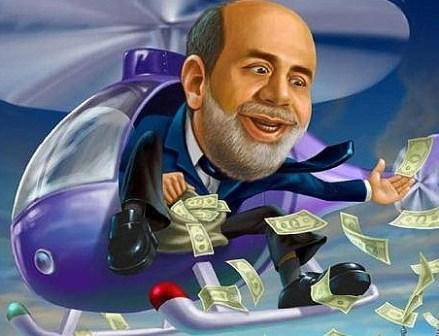
After months of “quanticipation“, the Federal Reserve has finally done it. Ben Bernanke yesterday announced another round of asset purchases. The much-vaunted third round of quantitative easing (QE3) is now a reality. And this time it’s permanent (or, at least, open-ended).
First, let’s get the details out of the way:
1. The Fed will buy $40 billion of mortgage-backed securities per month. This policy will continue indefinitely, depending on the state of the economy.
2. The Fed will continue Operation Twist, aimed at lowering longer-term Treasury yields, until the end of the year, while also continue its policy of rolling over maturing mortgage-backed securities. As a result, Fed asset purchases will total around $85 per month between now and the end of the year.
3. Fed policymakers extended their guidance for near zero policy rates to at least mid-2015
As you might expect, gold rallied following the announcement. Euro gold prices set a new all-time high above €1359 an ounce at this morning’s London gold fix. In Dollar terms though, gold didn’t quite reach this year’s high seen back in February.
Beyond the headline numbers, though, what have we learned from yesterday’s announcement?
Well, for one, yesterday’s move shows Fed policymakers have serious concerns about the state of the US economy, specifically centered around unemployment. Bernanke said the Fed will continue asset purchases until it sees “ongoing sustained improvement in the labor market”.
“There is not a specific number we have in mind,” Bernanke told reporters, “but what we’ve seen in the last six months isn’t it.”
Another thing we learned is that the Fed is treating its 2% inflation target as symmetric, as the Bank of England does, rather than as an upper limit in the style of the European Central Bank.
“Strains in global financial markets continue to pose significant downside risks to the economic outlook,” yesterday’s Federal Open Market Committee statement said. “The Committee also anticipates that inflation over the medium term likely would run at or below its 2 percent objective.”
This is straight out of the Bank of England playbook. The BoE has repeatedly warned of the risks that inflation could fall below target “over the medium term”, using this argument to justify extensions to its own QE policy even with inflation resolutely above target.
In his New York Times column, Paul Krugman has hailed yesterday’s announcement as the Fed trying “to credibly promise to be irresponsible” as a way of raising inflation expectations – something he advocated for Japan back in the 1990s.
Assuming that is the Fed’s aim, it could prove a dangerous miscalculation. Expectations of higher inflation, once they take hold, are very difficult to dislodge. Be careful what you wish for, and all that.
Nonetheless, one other thing we’ve learned is that negative real interest rates are likely to be with us for a good while yet. The Fed pretty much said so: it expects policy rates to stay near zero for at least three years, while at the same time viewing a fall in inflation below 2% as something best avoided.
This is bad news for those with money in the bank, who have seen interest on their savings fail to keep up with inflation for several years now. This unlikely to change over the much-vaunted “medium term”.
We are reminded of that famous quotation from Keynes: “The long run is a misleading guide to current affairs. In the long run we are all dead.”
That may be so, but it looks like in the medium term we’ll all be broke, as negative real interest rates show no signs of going away.
Getting back to gold, recent developments suggest the environment that saw gold gain more than six-fold in a decade is still very much with us: negative real rates and rising global liquidity. Last week, the European Central Bank announced it will purchase bonds “with no ex ante limit”. Yesterday, the Fed – guardian of the world’s reserve currency – joined them in making a similar open-ended commitment.

The spot market gold price touched a new six-month high at $1746 an ounce Wednesday morning, while stocks and the Euro also rallied following a ruling by Germany’s Constitutional Court cleared the way for the creation of a permanent Eurozone bailout fund.
In its preliminary ruling, the Court added however that Germany’s liability for the ESM should not exceed the €190 billion already pledged, with any increase requiring approval by the Bundestag.
“Taking full account of all elements of the ruling, I look forward to the completion of the outstanding procedures allowing for the Treaty Establishing the European Stability Mechanism to enter into force,” Jean-Claude Juncker, head of the Eurogroup of single currency finance ministers, said this morning, adding that ESM governors will meet for the first time on October 8.
The European Central Bank last week announced a program of unlimited secondary market government bond purchases, aimed at reducing differences between sovereign borrowing costs across Eurozone members. A condition of this program is that the ECB will only buy the debt of governments that have entered into an adjustment program that includes “the possibility of EFSF/ESM primary market purchases” – meaning a country must have sought assistance from the ESM or its temporary predecessor the European Financial Stability Facility.
“The Euro bailout measures and the opening of the monetary policy floodgates by the central banks are likely to result in higher inflation in the medium to long term,” says today’s Commerzbank commodities note.
“The price action (for gold) remains bullish with support at $1700 and an upside target of $1790,” says the latest technical analysis from bullion bank Scotia Mocatta.
The silver price meantime traded as high as $34.16 an ounce – also a six-month high – while other commodities were broadly flat.
In the US, the Federal Open Market Committee begins its latest two-day meeting today, which culminates with a policy announcement tomorrow.
Ahead of tomorrow’s Federal Reserve decision, analysts continue to speculate on whether the Fed will announce more quantitative easing (QE), with one suggesting the Fed could show itself to be “desperate” and another predicting central banks could be about to open the floodgates.
On the currency markets, the US Dollar Index, which measures the Dollar’s strength against a basket of other currencies, fell below 80 for the first time since May yesterday, following a ratings update from Moody’s that warned the US could lose its Aaa rating next year if legislators fail to agree measures “that produce a stabilization and then downward trend” in the US debt-to-GDP ratio.
The Euro meantime hit a four-month high against the Dollar this morning, trading above $1.29 after Germany’s Constitutional Court rejected challenges to the legality of Germany’s ratification of the European Stability Mechanism and European fiscal pact.
“Central banks are increasingly threatening unlimited action in order to force the market to take heed,” says Steve Barrow, head of G10 research at Standard Bank, citing the examples of the ECB as well as Switzerland’s central bank, which for a year has enforced a floor of SFr1.20 against the Euro after pledging to create an unlimited amount of Swiss currency.
“Markets are setting themselves up for disappointment,” warns Jeffrey Christian, managing partner of commodities consultancy CPM Group, adding that his firm is advising short-term clients to buy put options on gold and gold equities. A put option benefits if the price of the underlying asset falls. “We don’t think that you’ll see any major action (Fed) until after December.”
“One reason for waiting,” says Michael Hanson, senior US economist at Bank of America in New York, “would be if the Fed is thinking of structuring [QE] not as a fixed quantity but as a more open- ended plan, but they don’t have the details together yet and don’t have consensus on how to do that.”
NEWS RELEASE.
September 12, 2012: Vancouver, BC – Balmoral Resources Ltd. (Stock Profile – TSXV:BAR & OTCQX:BALMF) announced it entered into an agreement with Canaccord Genuity Corp., pursuant to which a syndicate of underwriters led by Canaccord and including Cormark Securities Inc. and Laurentian Bank Securities Inc. will purchase 4.35 million flow-through common shares of the company at a price of $1.15 per flow-through share on a bought deal private placement basis for gross proceeds of $5,002,500.
The Company has also granted the Underwriters an option to purchase from the Company up to an additional 1,740,000 flow-through common shares (the “Over-Allotment Shares” and together with the flow-through common shares, the “Offered Securities”) through the Offering at a price of $1.15 per Over-Allotment Share, exercisable 48 hours prior to the closing date of the Offering.
The proceeds raised from the Offering will be used to accelerate the exploration on the Company’s Detour Gold Trend Project, including additional drill testing of the Company’s Martiniere West, Bug Lake and recent high-grade Footwall discovery on the Martiniere Property and testing of high priority targets on the other Detour Trend Properties.
Closing of the Offering is anticipated to occur on or before October 4, 2012.
CompanyFeed™
NEWS RELEASE.
September 12, 2012: Vancouver, B.C. – Oracle Mining Corp. (Stock Profile – TSX:OMN & OTCQX:OMCCF) announced assay results from its ongoing core drilling program. These assay results include Oracle Mining’s first underground drill hole and the first results from drilling on the Zone 5 mineralization at the Oracle Ridge Copper Mine, located in southern Arizona.
These holes were drilled as part of Oracle Mining’s ongoing drilling program, the results of which will be included in a National Instrument 43-101 (“NI 43-101”) compliant resource estimation to be completed in 2012. A total of 42 holes have been assayed and reported since Oracle Mining began its current drill program in early 2011.
Underground drill hole OUH-01 encountered an interval of 94.0 feet of 2.02% copper, including within that interval 60.0 feet of 2.59% copper containing 20.0 feet of 4.7% copper. OUH-01 is the first hole drilled from an underground drill station by Oracle Mining and these results are the first from the Zone 5 mineralization.
The view a table of the intervals obtained from this phase of the drilling program – CLICK HERE.
CompanyFeed™
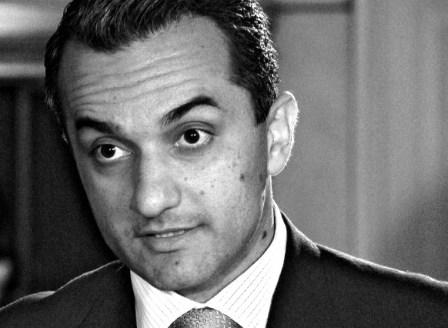
Recently we sat down with Amir Adnani, CEO of Uranium Energy Corp. (Stock Profile – NYSE MKT:UEC), an American uranium mining company, for a conversation on the nuclear industry eighteen months after the catastrophe at Fukushima which devastated both Japan and most uranium miners’ share prices.
One of the most critical issues we discussed in our interview was the severity of the US uranium supply and demand deficit. According to Adnani, “The US is consuming 55 million pounds of uranium per annum…to generate 20% of US electricity…[but] domestic production of uranium is only 4 million pounds per year…The US is more dependent on foreign uranium than it is on foreign oil.”
Adnani says the supply deficit is global: “The world consumes…more uranium than the mining industry produces. In terms of real numbers, there’s global demand of about 180 million pounds per year, and supply from mining activity is roughly 140 million pounds per year–so you have a 40 million pound per year supply deficit, just to meet current reactor requirements.”
How is that 40 million pound annual gap filled? The answer is retired Russian warheads.
“Since the cold war ended,” Adnani continues, “we’ve relied heavily on military inventories of uranium–basically dismantling retired Russian nuclear warheads to feed this supply imbalance. This has taken place under a treaty called, “The Highly Enriched Uranium Treaty”, or the “HEU Treaty”, which is set to expire next year, in 2013. [Additionally], the Russian government has come out repeatedly, saying that after this agreement [expires] there’s no interest on their part to continue utilizing this source of supply…That’s a very important catalyst for recognizing why higher uranium prices are needed–in order to stimulate interest in new mine construction…to fill this secondary supply source.”
When looking at future demand Adnani concludes: “There are roughly 430 nuclear reactors operating worldwide…over 60 [new reactors] in construction…and hundreds more planned between now and 2020-2030…What’s happening right now in the world in terms of new nuclear builds is unprecedented.”
Regardless of where uranium prices go from here, Adnani is a mining entrepreneur investors should follow. At just 34 years of age, he has built one of a small handful of uranium producers in the world today. The speed at which Adnani grew his company into a producer is impressive, and he is among the hardest working executives we have met in the mining business.
Thank you to Vancouver Club for providing the venue, and to Amir for joining the program – watch the entire interview below.

China remains by far the world’s largest producer of primary antimony. It’s estimated that China accounted for around 70% of official mine production in 2011, down from around 80% in earlier years. Production in China is unlikely to increase over the next few years and could even fall in the face of government determination to limit environmental damage from smaller operations.
Efforts to improve the environmental impact of the industry have led to a number of suspensions and closures at mines and smelters, with some plants unable to meet the costs of upgrading and improving their facilities. This, together with increasing crackdowns on illegal mining and smuggling, has contributed to volatile production levels.
It’s estimated that illegal supply from China amounted to 15-20% of total world supply from 2008 to 2011. If the Chinese government is successful in halting or diminishing both illegal production and exports of antimony, the impact on global supply will be considerable.
Further, whilst official Chinese statistics still report considerable reserves, independent estimates suggest that they might be reaching exhaustion, particularly in the area of Lengshuijiang City, the centre of antimony mining in China. Although some resources were discovered in 2011, very few deposits have been explored or developed in recent years. There is, therefore, an increasing need for China to import more concentrates from abroad to sustain levels of refined production.
Volatility likely to continue as prices rise.
Given China’s dominant position as a producer, changes in Chinese government policy have been the most important factor affecting antimony prices since the early 1990s. Concerns over diminishing reserves in China, together with the cost to producers of environmental compliance, and increasing crackdowns on illegal mining and smuggling have all contributed to sharp price increases over the past few years.
Increased production elsewhere is likely to offset any declines in Chinese production in the short term. There are a number of significant additional sources of antimony concentrates in Europe, N. America, Africa and Oceania.
Antimony prices increased steadily throughout 2010, as mine closures in China restricted global supplies, and reached their peak in March 2011. However, prices fell back as smelters came back online in Hunan, and as a result of continued weak demand in Europe and Japan. Subsequent smelter closures following environmental checks have since caused prices to increase periodically.
Continued growth in demand for antimony, especially trioxide, combined with the uncertainty over the ability of China to increase production because of resource and environmental limitations, means prices are likely to stay high and volatile.
According to international metals and minerals research firm Roskill, prices for antimony trioxide could rise to US$15,000/t by 2016, eclipsing the US$13,000/t peak witnessed in 2011.
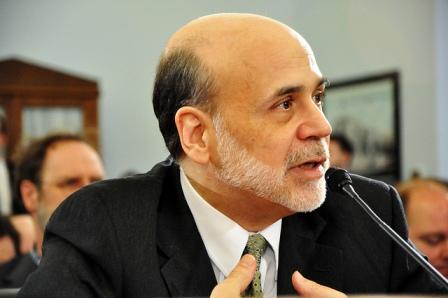
The GDP is considered the nation’s report card because it provides the broadest measure of economic activity. What does the US’s latest report on the state of the economy, the US’s GDP report card, say in regards to further monetary easing, yes or no?
Lets break it down into a pro/con list, the pros are actually negative stats but are positive for more quantitative easing (QE3).
Second Quarter Report Card, Pro
- The Commerce Department said gross domestic product expanded at a 1.7 percent annual rate. GDP growth is sluggish – the economy’s average sustainable growth rate has historically been between 2.5% and 3.0% – a growth rate of between two percent and 2.5 percent is generally seen as needed just to hold the jobless rate steady.
- The unemployment rate ticked up to 8.3 percent in July (and has exceeded eight percent for 42 straight months) so despite the Fed’s best efforts the unemployment rate is still climbing, payroll increases averaged 73,000 in the second quarter, down from 226,000 in the prior three months. More disturbing, nearly half of the unemployed people in the US have now been out of work for six months or longer, that’s up from the traditional median unemployment duration of ten weeks.
- Consumer spending, which accounts for about 70 percent of U.S. economic activity, was 1.7 percent, down from the first quarter’s 2.4 percent pace. A smaller rise is expected for the third quarter with demand for big-ticket items such as automobiles cooling.
- Rising fuel costs and the prospect of tax changes and government budget cuts – the so called “fiscal cliff” in the U.S., the $600 billion of tax increases and spending cuts that will take effect automatically at the end of the year are hurting consumer confidence.
- There was a pull-back in restocking by businesses wary of sluggish domestic demand. Also growth in business investment in equipment and software was lowered to a 4.7 percent pace, the slowest since the third quarter of 2009 and softer export growth is expected. Factory orders data showed demand for non-defense capital goods excluding aircraft – a measure watched as an indicator of business confidence and future spending – fell 4 per cent in July, following a 1.7 per cent decline in June. The months of May and April saw declines of 2.1 per cent.
The Bright Spots, Con
- Stronger export growth.
- Wages and salaries from April through June rose by $56.1 billion after a revised $133.5 billion first-quarter gain that was bigger than the previous estimate of $123.3 billion.
- Disposable income adjusted for inflation rose 3.1 percent from April through June after a 3.7 percent gain in the first quarter.
- The saving rate in that same period climbed to four percent from 3.6 percent in January through March.
- The index of pending home re-sales climbed 2.4 percent to 101.7, the highest since April 2010.
Reason, and Room, to Ease
At this point, QE3 is a real possibility. According to Federal Reserve chief Ben Bernanke, “We have seen no net improvement in the unemployment rate since January. Unless the economy begins to grow more quickly than it has recently, the unemployment rate is likely to remain far above levels consistent with maximum employment for some time.”

Yesterday, after the market close, Lydian International Ltd. (Stock Profile – TSX:LYD) released the results of a feasibility study for its 100%-owned Amulsar heap leach gold project in Armenia.
The study estimates average annual production of 184,000 oz per year at total cash costs of US$468/oz over a 12-year mine life based on reserves of 2.3 Moz grading 0.80 g/t Au. Pre-production capital costs were estimated at US$270 million and total life-of-mine sustaining capital was forecasted at US$147 million.
According to TD Securities mining analyst Daniel Earle, this event is a positive impact for the company. Mr. Earle writes, “The results were in line with our expectations and confirm to us that the company possesses one of the most robust development-ready gold projects of a significant size globally. With what we view to be relatively modest development costs, owing to heap leach processing and good infrastructure, the project benefits from low capital intensity relative to its production potential; this, together with its scale, make it a particularly attractive acquisition target – in our view.”
He also says, “We believe that permitting risk is the major limiting factor in the valuation of the company’s shares and several significant steps remain in the process (with completion expected by Q1/13), including: 1) approval of the EIA for planned mine closure activities; 2) approval of the Environmental and Social Impact Assessment (ESIA); 3) issuance of the Rock Allocation Area (essentially rezoning to Industrial from Agricultural), and 4) receipt of a Concession Agreement.”
Analyst Daniel Earle raised his 12-month target price for Lydian International to $3.50/share (up from $3.00/share) and, after incorporating the results of the feasibility model, calculated the NAV (5% discount rate) at $4.24/share (up from $3.86/share).
NEWS RELEASE.
September 6, 2012: Vancouver, B.C. – MAG Silver Corp. (Stock Profile – TSX:MAG & NYSE MKT:MVG) announces results from continued definition drilling of the Jose Manto-Bridge Zone on its 100% owned Cinco de Mayo Property in northern Chihuahua, Mexico.
The best intercepts are: Hole 430, on the 383 Section at the northwest end of the Bridge Zone, which reported 84 grams per tonne (“g/t”) (2.4 ounces per ton (“opt”)) silver with 1.6% lead and 11.0% zinc over 11.79 metres; including: 160 g/t (4.7 opt) silver with 3.2% lead and 12% zinc over 5.87 metres; including: 2.54 metres that grades 258 g/t (7.5 opt) silver with 7.1% lead and 25.9% zinc; and Hole 418, on the 382 Section at the southeast end of the Bridge Zone which reported 131 g/t (3.8 opt) silver with 4.6% lead and 6.8% zinc over 9.17 metres; including: 2.70 metres that grades 256 g/t (7.5 opt) silver with 6.8% lead and 8.0% zinc.
Drilling has progressed northwest and southeast from previously announced sections with holes being drilled to intersect the manto about every 50 metres down-dip on sections spaced 250 m apart. The results demonstrate vertical continuity from between 125 and 450 metres depth and lateral continuity for over 4,000 metres throughout the zone.
To learn more about the results – CLICK HERE.
CompanyFeed™
NEWS RELEASE: Project Permitting on Track for Completion in 2012.
September 6, 2012: Montreal, Quebec – Stornoway Diamond Corp. (Stock Profile – TSX: SWY) announced it has entered into a Mandate Letter with seven financial institutions (the “Mandated Lead Arrangers”) in connection with a potential senior debt financing for Stornoway’s 100% owned Renard Diamond Project.
The Mandated Lead Arrangers are Bank of Montreal, Caterpillar Financial, Export Development Canada, Investissement Québec, Nedbank Capital Limited (London Branch), Société Générale (Canada Branch) and The Bank of Nova Scotia. The Mandate Letter establishes the terms under which the Mandated Lead Arrangers have been appointed to arrange senior loans of up to US$475 million. It does not constitute a commitment to underwrite, provide or secure financing, which remains subject to due diligence, the completion of definitive loan documentation, credit and other approvals, and the terms and conditions of the term sheet attached to the Mandate Letter, among other things.
In connection with the Mandate Letter, Bank of Montreal is appointed Administrative Agent and Modeling Bank, Caterpillar Financial is appointed Insurance Agent, Nedbank Capital Limited (London Branch) is appointed Marketing Bank, Société Générale (Canada Branch) is appointed Documentation Agent, and The Bank of Nova Scotia is appointed Technical Agent, Trustee and Account Bank.
Stornoway is pursuing a financing strategy for the Renard Diamond Project based on a combination of senior project debt, equity and financing options tied to future diamond production. The $475 million senior debt financing contemplated by the Mandate Letter is in the context of an overall financing plan that includes provisions for the totality of the project’s initial pre-production capital cost, as defined in the November 2011 Feasibility Study, working capital requirements, escalation, financing costs and a pre-arranged contingent cost over-run facility.
Matt Manson, Stornoway’s President and CEO commented: “Our objective in financing Renard is to minimize the capital that has to be raised to construct the project, and to minimize the equity portion of that capital. The Mandate Letter announced today is an excellent first step in this direction, and reflects well on the strength of the project and the credentials of Stornoway’s operating team. We continue to be greatly assisted by the support of our principal shareholders, in particular DIAQUEM Inc., a subsidiary of Investissement Québec, with whom we entered into a $100 million credit support agreement in April 2011 and who hold a 25% pre-emptive right to subscribe to new equity. With our principal regulatory approvals expected shortly, financing arrangements proceeding and road construction ongoing, Stornoway is well positioned to follow-through on the development of Renard starting next year.”
To read more – CLICK HERE.
CompanyFeed™
NEWS RELEASE.
September 5, 2012: Vancouver, B.C. – MAG Silver Corp. (Stock Profile – TSX:MAG & NYSE MKT:MVG) and Mining Investors for Shareholder Value (MISV), a group of MAG shareholders collectively holding approximately 9.76% of MAG’s outstanding shares and organized by Jeffrey E. Eberwein and Charles M. Gillman, announced today an agreement to nominate Richard Clark and Peter Barnes for election at the upcoming annual and special meeting of shareholders to be held on October 5, 2012.
Jonathan Rubenstein, Chairman of MAG, said today: “We recently engaged in a dialogue with Jeff Eberwein and Chuck Gillman of MISV and are pleased that this collaborative effort has yielded the inclusion of two strong candidates for MAG’s board in our forthcoming proxy circular. Rick and Peter have excellent track records of creating value for shareholders and we are pleased to add their expertise at this crucial time in MAG’s development.”
To read more – CLICK HERE.
CompanyFeed™

Gold prices fell briefly below $1690 an ounce today this morning in London trading, remaining close to six-month highs, while stocks and commodities were also broadly flat, ahead of tomorrow’s policy announcement from the European Central Bank.
“The next resistance is at $1700,” says the latest technical analysis from bullion bank Scotia Mocatta. Spot gold prices briefly touched that level on Tuesday, following the release of the latest ISM purchasing managers index data.
The ISM data show US manufacturing activity contracted in August for the third month in a row, prompting further speculation about the possibility of a third round of quantitative easing from the Federal Reserve, whose policymakers meet next Tuesday and Wednesday.
“[The ISM report] gives the Fed another green light to launch QE3 next week,” reckons Paul Dales, senior US economist at consultancy Capital Economics.
“Will QE really come?” asks Dominic Schnider at UBS Wealth Management. “It is a little too early to go full throttle…policymakers are heating things up, but will what eventually comes out to be as big as the market is looking for?”
The volume of gold held to back shares in the world’s biggest gold ETF, the SPDR Gold Trust (GLD), rose to its highest level since March 19 yesterday, hitting 1293.1 tonnes. Total gold ETF holdings meantime set an all-time record Tuesday, according to newswire Reuters.
On the New York Comex, open interest in gold futures rose to six month highs yesterday, although we will not know the balance of bullish and bearish positions until the weekly Commitment of Traders report comes out at the end of the week.
In Europe meantime, the ECB and Bank of England are due to make their latest policy announcements tomorrow. Earlier this week, ECB president Mario Draghi reportedly told a committee of European Parliament lawmakers that he favors buying sovereign bonds of up to three years in maturity on the open market.
“We expect the ECB action to be supportive of gold,” says today’s commodities note from Standard Bank. “A stronger Euro and weaker Dollar could see gold move above $1700.”
Over in India, traditionally the world’s largest gold buying nation, there are fears of another rise in gold import duties.
“The government may look at increasing the duty to 7.5%,” says Prithviraj Kothari, president of the Bombay Bullion Association. “Any such move will hit demand in a big way.”
“Any increase in duty will play havoc on the industry,” agrees Bachhraj Bamalwa, chairman of the All India Gems & Jewellery Trade Federation. “The industry is grappling with high gold prices and demand is slow.”
Indian gold jewelry demand however is set to rally in the second half of 2012, after falling to three-year lows in the six months to June, precious metals consultancy Thomson Reuters GFMS said Tuesday.
GFMS, which published its Gold Survey 2012 Update 1 yesterday, added that it expects gold prices to breach $1800 by the end of this year, with gold investment forecast to hit record levels and central banks expected to add a further 220 tonnes of gold to their reserves, following the 273 added in the first half of the year.
“I think we’re on pretty safe ground saying that we’ve already seen the lows for the year and that firmer prices, particularly towards year-end, are on the cards,” said GFMS global head of metals analytics Philip Klapwijk. “But we’re also expecting a bumpy ride…any intensification of the Eurozone crisis or dashing of hopes for further easing by the Fed and you could easily see the rally derailed for a while.”

Woody Allen once said 80% of success is just showing up. It might sound trivial but showing up, every day, is not easy. When I first met Darin Wagner, President and CEO of Balmoral Resources (Stock Profile – TSXV:BAR & OTCQX:BALMF) nearly two years ago my first impression was what a personable guy. Today, I see his past success in a different light – this guy always shows up.
Darin spent his first ten years as a project generator and exploration geologist with two of Canada’s largest exploration and mining companies Noranda (now Xstrata) and Cominco (now Teck). Immediately prior to Balmoral Resources, he served as President and CEO of West Timmins Mining through the discovery of a high-grade gold zone in Timmins, Ontario to the acquisition of West Timmins by Lake Shore Gold in an all share deal valued at $424 million that was completed in November of 2009.
But Darin Wagner is not one to rest his laurels on past success. This is a busy time for Balmoral Resources, drills are on the ground and results are in the lab. While many mining CEOs were away enjoying their summer vacation, Darin was working. We connected with Darin to learn more about what could already be defined as a productive drill season for this emerging junior gold explorer.
In mid-August Balmoral released results from the Martiniere Property – two holes from a new discovery in the Bug Lake Zone which included 272.39 g/t gold over 3.88 metres – and the market responded well to the news. Why are these results significant to the company?
While the gold values from the new Footwall discovery are among the highest grades I have encountered in my 20+ year career, with respect to the Martiniere gold system what they really do is further cement this system as one of the best new high-grade gold discoveries in North America. In less than 18 months we have gone from concept, through discovery to beginning to drill off a new high-grade gold system in a world class gold district – not a bad start.
The results were from the first two holes of a summer drill program at the Martiniere Property – what else is happening on the ground there and when are additional results expected?
Since we started turning the drills this summer we have announced 4 new gold discoveries, including the spectacular results from the Footwall discovery, and we have results from another 38 holes pending and drilling set to resume in late September. The majority of the pending results are from expansion drilling on a number of high-grade gold zones we have intersected at Martiniere over the last 12 months.
You have a portfolio of properties in Ontario and Quebec, from a corporate development perspective, how do you move your projects forward collectively without stretching yourself too thin?
We take a diverse approach to best deliver value to our shareholders. On our flagship Detour Gold Trend Project in Quebec we operate and fund the project ourselves as we feel that our experience in this area and the potential of this project provide the greatest shareholder upside.
In Ontario we have a very promising project called Northshore where we have optioned an interest to GTA Resources and Mining who are funding the exploration work and moving the project forward. We have another project in Quebec – N2 – where we are currently also entertaining expressions of interest from third parties.
You mentioned your partnership with GTA Resources. Last year your partner released some excellent results from the Northshore property (149.50 metres grading 1.20 g/t gold – capped) what’s on the horizon at Northshore?
The drill is currently turning on Northshore with GTA looking to continue to expand the broader Afric Zone and several high-grade sub-zones. They have indicated that we can expect to see them complete approximately 20 holes this fall so there is a great deal more news from the Northshore for our shareholders to look forward to in addition to more results from Martiniere
Your previous company, West Timmins Mining, was bought out by Lake Shore Gold for $424 million. At this early stage, how are things stacking up for Balmoral in comparison to West Timmins?
I think Balmoral may well be setting itself to be an even better story than West Timmins. First we own, or have the right to purchase, 100% of our lead asset whereas with West Timmins we only held 40% of the Thunder Creek gold discovery. Our land position on the Detour Trend is almost 8x the size of the land position we held in the West Timmins area and like West Timmins we have a major mine build going on the adjacent property. In the case of West Timmins this was the sub-million ounce Timmins Mine of Lake Shore Gold, in the Balmoral case it is the > 20 million ounce Detour Gold Deposit which beginning in 2013-14 will be Canada’s largest gold mine.
In one sentence, why should an investor take a serious look at Balmoral Resources when there are hundreds of other junior gold companies out there competing for their attention?
Balmoral is an emerging high-grade gold story, located in one of the best mining jurisdictions in the world, managed by an experienced group who have already demonstrated the potential to provide impressive returns to shareholders in this space.
Disclosure: at publication date Balmoral Resources is a client of MiningFeeds.
NEWS RELEASE.
September 5, 2012: Vancouver, B.C. – MAG Silver Corp. (Stock Profile – TSX:MAG & NYSE MKT:MVG) announced it has closed its private placement offering of 3,526,210 common shares at a price of $9.40 per share for gross proceeds of approximately $33.1-million. The common shares issued are subject to a four-month hold period under applicable Canadian securities laws.
The company intends to use the net proceeds from the offering to finance its share of the recently announced permitting and underground development program for Juanicipio, advancement of Cinco de Mayo including continued exploration as well as generation of an initial resource estimate, and for general corporate purposes.
To read more – CLICK HERE.
CompanyFeed™
If you would like to receive our free newsletter via email, simply enter your email address below & click subscribe.
CONNECT WITH US
Tweets
Tweet with hash tag #miningfeeds or @miningfeeds and your tweets will be displayed across this site.
MOST ACTIVE MINING STOCKS
Daily Gainers
 Lincoln Minerals Limited Lincoln Minerals Limited |
LML.AX | +125.00% |
      |
GCR.AX | +33.33% |
      |
CASA.V | +30.00% |
      |
AHN.AX | +22.22% |
      |
ADD.AX | +22.22% |
      |
AZM.V | +21.98% |
      |
NSE.V | +21.05% |
      |
DYG.V | +18.42% |
      |
AAZ.V | +18.18% |
      |
GLA.AX | +17.65% |

 Follow us on Twitter
Follow us on Twitter Become our facebook fan
Become our facebook fan








